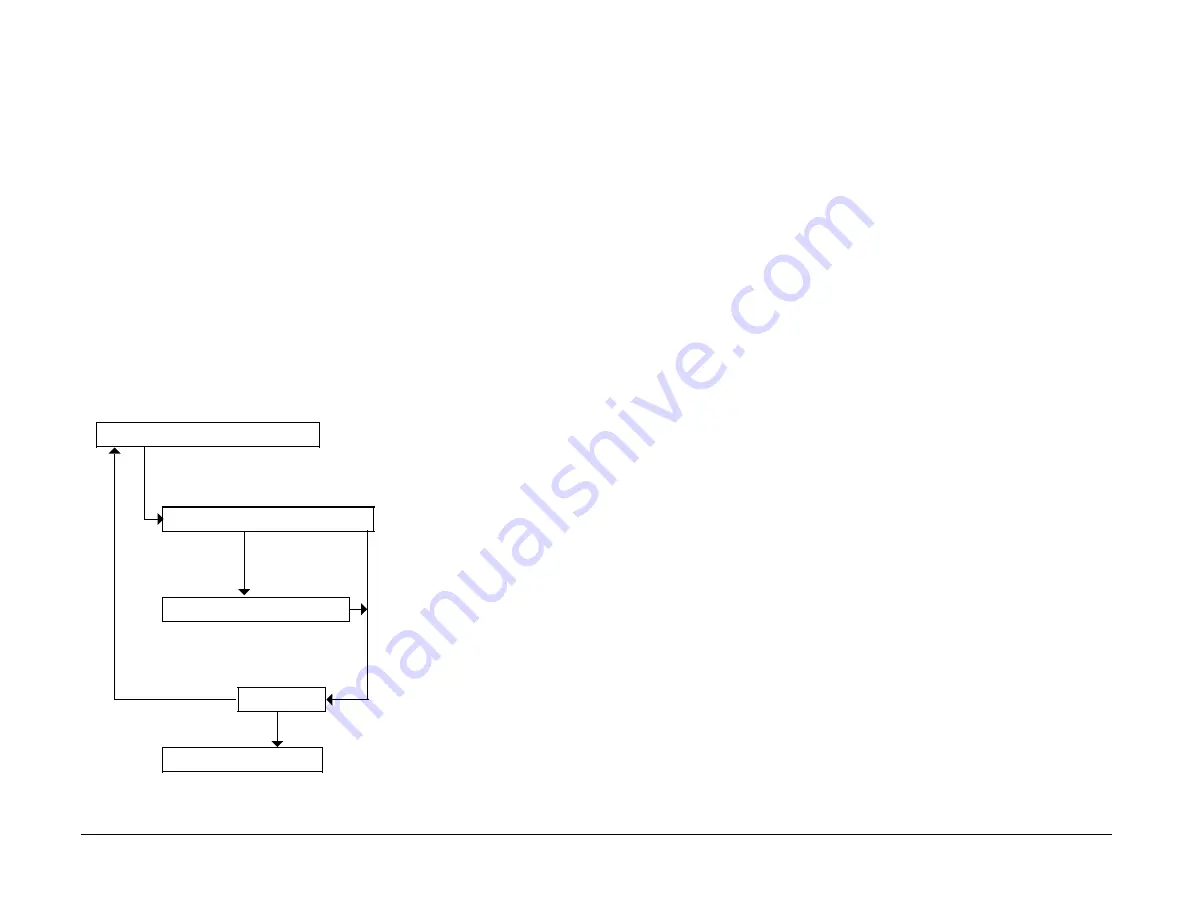
Section Introduction
The Service Call Procedures section is used to
identify a suspected problem. This section
contains, Initial Actions, System Check,
Additional Systems Check and Final Actions.
Initial Action is used to gather information
regarding the performance of the terminal.
Initial Action is usually the first step performed
on a service call. System Check is used to verify
the normal operation of the terminal.
Additional System Check contains mechanical
RAPs (Repair Analysis Procedures) and various
built-in electrical tests that can be initiated by
the service representative. Refer to Additional
System Check when directed by System Check.
Final Actions is used to complete the service
call after the problem has been repaired.
Call Flow
The Call Flow diagram illustrates the normal
sequence of events used on each service call.
Service Call Procedures
Status Indicator RAPs
Spare Parts List
Repair
Image Quality RAPs
7017-104
Figure 1 Call Flow
Procedures
1.1 Initial Action
Initial Action is used to gather information
from the operator concerning problems at the
local terminal. Question the operator and
make note of symptoms and error codes or
other information concerning the error. This
information may help you to identify a
problem in the case of an intermittent or
unusual machine error. Once all information is
gathered, prepare for System Check. If the
operator is not available, go directly to the
System Check.
1.2 System Checks
Begin each procedure in System Check with
Step 1. It is important to follow the sequence
outlined in the Off-Line and On-Line
procedures since each step assumes the
previous steps to be correct. Each step is the
normal operational event of the terminal and
can be confirmed by answering Y (yes) to the
statement. A Y response leads to the next
step. A N (No) response will lead to a RAP
(Section 2.0) or a component replacement.
Replace the components listed after N in the
order given.
Perform the System Check to verify repair after
completing each corrective action (replacing
or adjusting a part, or reseating a connector,
etc.).
If an error code is displayed, go to Section 2.0.
Turn to the Table of Contents and locate the
Error Code List. Locate the error code that was
displayed and follow the Corrective Action
indicated.
If an operator function and error code are
displayed, write down the error code and
perform the operator function. In the event
the operator function does not repair the
problem, go to Section 2. Locate the error
code in the Error Code List and follow the
actions indicated.
In the event Service Call Procedures do not
isolate the problem call for assistance.
6/88
Introduction, Call Flow, Procedures
1-2
Telecopier 7017 / 7017SF
www.printcopy.info
www.printcopy.info


















